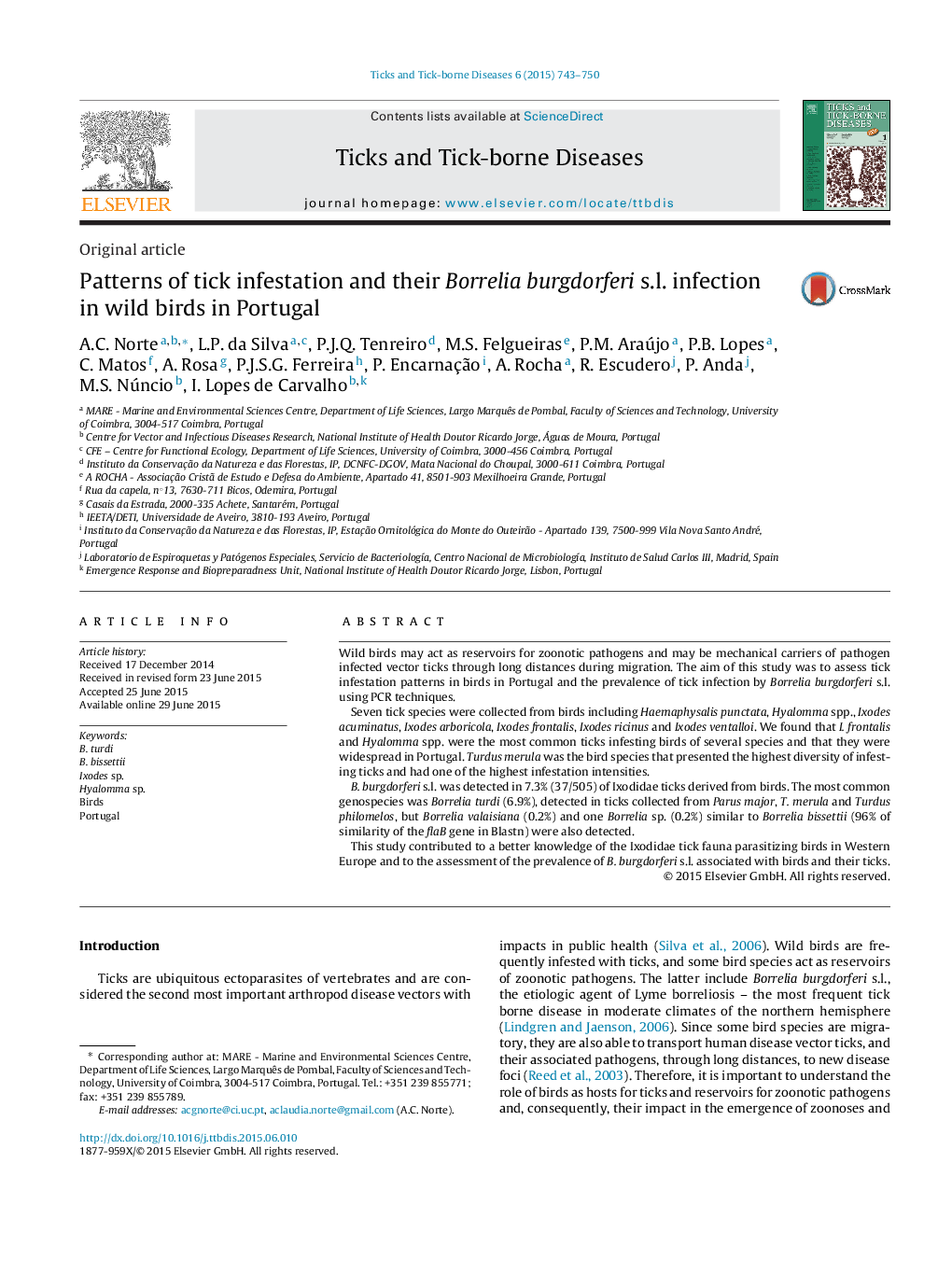| Article ID | Journal | Published Year | Pages | File Type |
|---|---|---|---|---|
| 5807192 | Ticks and Tick-borne Diseases | 2015 | 8 Pages |
Wild birds may act as reservoirs for zoonotic pathogens and may be mechanical carriers of pathogen infected vector ticks through long distances during migration. The aim of this study was to assess tick infestation patterns in birds in Portugal and the prevalence of tick infection by Borrelia burgdorferi s.l. using PCR techniques.Seven tick species were collected from birds including Haemaphysalis punctata, Hyalomma spp., Ixodes acuminatus, Ixodes arboricola, Ixodes frontalis, Ixodes ricinus and Ixodes ventalloi. We found that I. frontalis and Hyalomma spp. were the most common ticks infesting birds of several species and that they were widespread in Portugal. Turdus merula was the bird species that presented the highest diversity of infesting ticks and had one of the highest infestation intensities.B. burgdorferi s.l. was detected in 7.3% (37/505) of Ixodidae ticks derived from birds. The most common genospecies was Borrelia turdi (6.9%), detected in ticks collected from Parus major, T. merula and Turdus philomelos, but Borrelia valaisiana (0.2%) and one Borrelia sp. (0.2%) similar to Borrelia bissettii (96% of similarity of the flaB gene in Blastn) were also detected.This study contributed to a better knowledge of the Ixodidae tick fauna parasitizing birds in Western Europe and to the assessment of the prevalence of B. burgdorferi s.l. associated with birds and their ticks.
